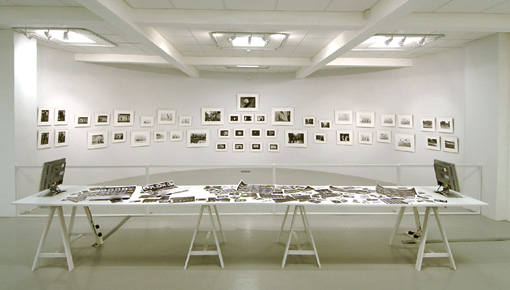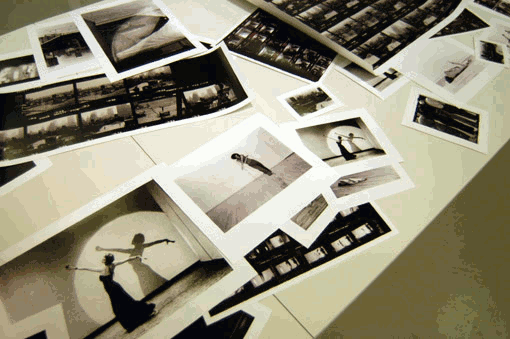| Babette Mangolte:
A Photo Installation at PS One |
| (1978) |
| |
| Landscapes and History |
| (1997) |
| |
| About Looking |
| (2002) |
| |
| Art Lies and Videotapes:
Exposing Performance |
| (2003-2004) |
| |
| Spaces to see, stories to tell |
| (2007) |
| |
| Looking and touching |
| (2007) |
| |
| presence |
| (2008) |
| |
| collision |
| (2008) |
| |
| rushes |
| (2009)
|
| |
| "How to Look...” |
| (Whitney biennial, 2010) |
| |
| "While Bodies get mirrored" |
| (Migros Museum, Zurich, 2010) |
| |
| Movement and Stills |
| (New York City, 2010) |
| |
| Yvonne Rainer: Testimony to Improvisation (1972-75) |
| (Glasgow, UK, 2010) |
| |
| Éloge du Vert |
| (Homage to the Color Green) |
VOX, Montréal, Canada 2013 |
| |
TOUCHING III with COLLAGE III
Inhotim, Brazil, 2013
Show curated by Rodrigo Moura: Opening October 24, 2013 for two years till 2015 |
| |
READING OF YVONNE RAINER'S "THIS IS THE STORY OF A WOMAN WHO…”
(WHITNEY MUSEUM “RITUALS OF RENTED ISLAND” 2013) |
| |
I = EYE Babette Mangolte
(Solo Show at Kunsthalle in Vienna, Austria 2016) |
| |
Roof Piece Installation
Three contiguous screens with projections of 2K video
from 16mm films from the 1973 performance July 1, 1973
(Bordeaux Centre of Contemporary Art, France, 2018)
|
| |
Spaces TO SEE
(Solo Show at Rochechouart Museum of Contemporary Art,
in Rochechouart, France 2019)
|
| |
|
| |
Looking
and Touching was included in Live Art
on Camera at the John Hansard Gallery curated
by Alice Maude-Roxby.
John
Hansard Gallery, Southampton ,
SO17 1BJ UK -
SEPTEMBER 18 - NOVEMBER 10, 2007
|
| |
Live
Art on Camera reveals the work of photographers
who documented seminal performance art events from
the 1950s to the present in Europe, the United
States and Japan.
These events (often experienced live by only a small
audience) are primarily received through still images:
arguably subjective records, translated through the
ideas and aesthetics of the photographer. |
| |
|
| |

Looking
and Touching
Photo
and film installation by Babette Mangolte 2007
|
| |
|
| |
Images: |
| |
|
| |
|
| |
The
installation proposes various ways to view, feel and
touch photographs.
The
framed prints on the wall are seen from a distance, which
imposes a certain theatricality to how we look photographs.
You are encouraged to manipulate the photographs on the
table and compare them to the contact sheets or to the
framed prints on the wall. This allows you to examine
the photo details in close up and to create your own
composition and collage. The sound that is coming from
the two monitors brings the context of the time when
those photographs were taken. The images from the films
evoke the spaces where the people in the photographs
and photographer lived.
PS: All photographs on the wall are printed on fiber-based paper and all prints
on the table are digital inkjet prints.
|
| |
|
| |
Slide Show: |
| |

|
| |
|
| |
|
| |
|
| |
Framed Prints Captions: |
| |
|
|